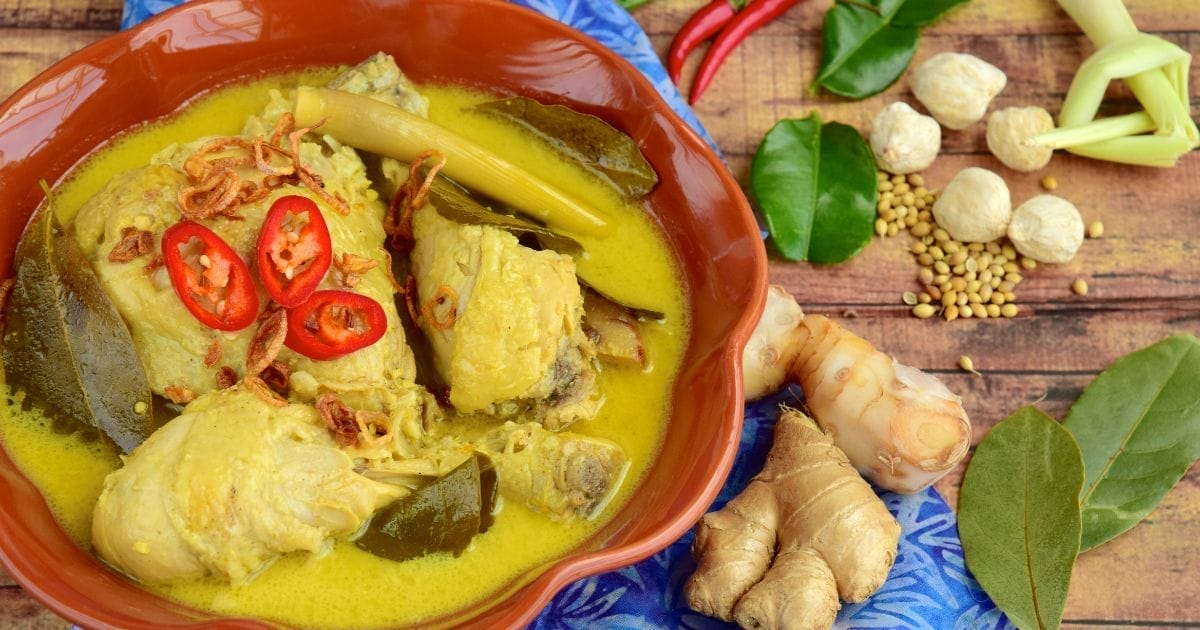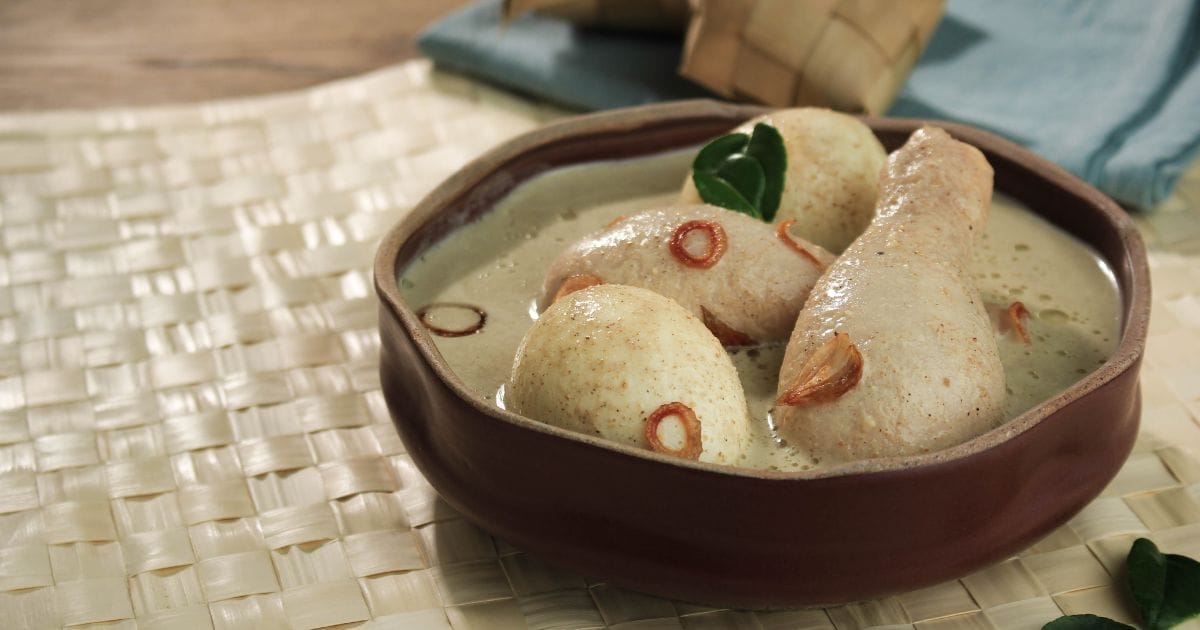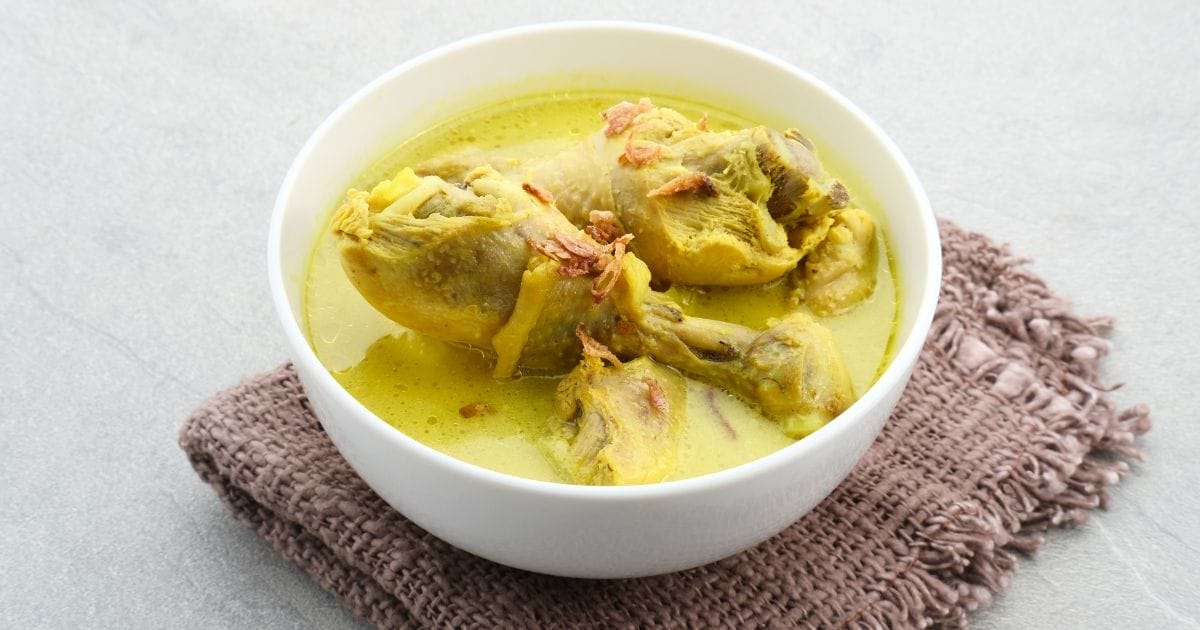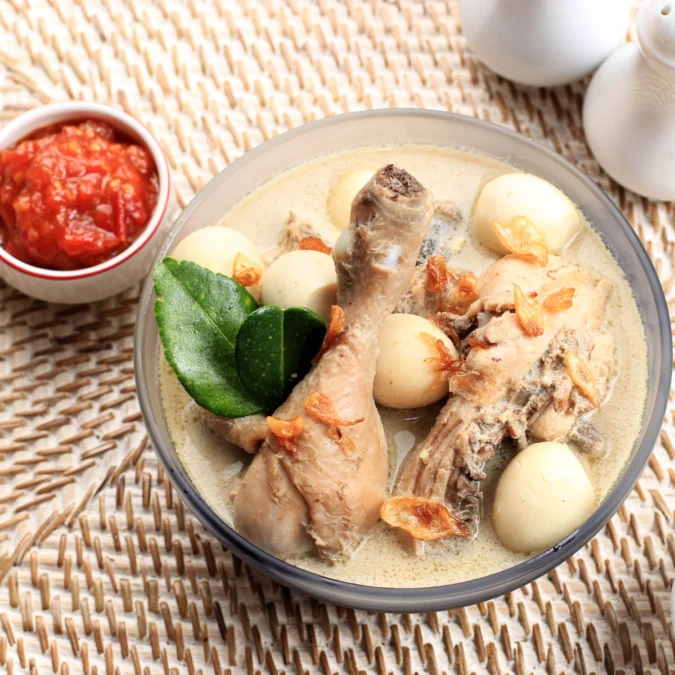Discover the rich flavors and cultural significance of Opor, a traditional Javanese cuisine. Learn about its history, ingredients, and how it is prepared for the festive occasion of Lebaran. Explore the variations of this dish across the Indonesian archipelago and its importance in preserving Javanese culinary heritage. Whether enjoyed with family and friends or at a local restaurant, Javanese white curry offers a taste of tradition and togetherness. Experience this incredible creamy white curry and appreciate the flavors and stories it carries.
When it comes to traditional Javanese cuisine, few dishes can rival the rich flavors and cultural significance of Opor. This creamy white curry, infused with the aromatic notes of candlenut and coconut, has become a staple in Javanese households, particularly during the festive occasion of Lebaran (Eid).

Opor White Curry – A Taste of Tradition
This is a dish that holds a special place in Javanese culinary heritage, with a history that dates back centuries. It is believed to have originated from the royal courts of Java, where it was prepared as a delicacy fit for kings and queens. Over time, it gradually made its way into the homes of ordinary Javanese people, becoming a beloved part of their culinary repertoire.
What sets this dish apart from other curries is its distinct white color. Unlike its spicier counterparts, this recipe relies on a delicate blend of ingredients to create a harmonious balance of flavors. The key components of this dish include candlenuts, coconut milk, galangal, lemongrass, and a medley of aromatic spices. These ingredients work together to create a creamy and fragrant curry that is both comforting and satisfying.

A Celebration of Lebaran
Lebaran, also known as Eid, is one of the most important religious holidays in the Islamic calendar. It marks the end of Ramadan, a month of fasting and spiritual reflection. During this joyous occasion, families and friends come together to celebrate with feasts and traditional dishes, and Opor takes center stage on many dining tables.
Preparing Javanese White Curry for Lebaran is a labor of love that requires time and attention to detail. The dish is often made in large quantities to accommodate the festive gatherings. Family members gather in the kitchen, sharing stories and laughter as they prepare the ingredients and cook the curry. The aroma of the dish fills the air, creating an atmosphere of anticipation and excitement.
As the curry simmers on the stove, the flavors meld together, creating a rich and velvety sauce. The tender pieces of chicken or beef absorb the essence of the spices, resulting in a dish that is both hearty and comforting. An example of this is the popular Penang White Curry Mee. Unlike the curry mee it is typically served with steamed rice, which allows the fragrant curry to be soaked up and savored.

Preserving Tradition
While Opor is deeply rooted in tradition, it has also evolved over time to suit modern palates. Variations of the dish can be found across the Indonesian archipelago, each with its own unique twist. Some regions add additional spices or ingredients, such as turmeric or potatoes, to enhance the flavor profile.
Despite these variations, the essence of Javanese white curry remains the same – a celebration of flavor and tradition. It serves as a reminder of the rich cultural heritage of Java and the importance of coming together to share a meal with loved ones.
Today, the dish continues as one of the archipelagos most beloved dishes, not only during Lebaran but also throughout the year. Its creamy texture and delicate flavors make it a versatile option for any occasion. Whether enjoyed with family and friends or savored at a local restaurant, it offers a taste of Javanese culinary heritage that is sure to delight the senses.
Discover Opor Javanese White Curry: A Celebration of Flavor and Tradition
4
servings15
minutes30
minutes300
kcal33.3
g23.6
g45
minutesThis recipe offers the possibility for three different variations. The first is Opor Ayam (Chicken Curry), The second is Opor Sayur (Mixed Vegetable Curry), or Opor Tempe (Tempe Curry) and the paste which is needed for all 3 variations.
Keep the screen of your device on
Ingredients
- Opor Ayam (Chicken Curry)
400 g 400 chicken thigh, diced
1/2 1/2 eggplant, diced
1/2 1/2 brown onion, diced
- Opor Sayur (Mixed Vegetable Curry)
1 1 carrot, diced
2 2 cauliflower, diced
1 1 eggplant, diced
2 cups 2 2 cups long beans
1/2 1/2 brown onion, diced
- Opor Tempe (Tempe Curry)
1 1 brown onion, diced
1/2 1/2 carrot, diced
4 blocks 4 tempe, diced
- Opor Paste
8 8 red shallots, thinly sliced
7 7 cloves garlic, sliced
20 20 candlenuts, roasted
4 cm 4 galangal, sliced
1 tsp 1 coriander seeds
2 stalks 2 lemongrass
3 3 lime leaves
3 3 bay leaves
3 cm 3 ginger, sliced
200 ml 200 water
- Coconut and Garnish
100 ml 100 coconut milk
2 tbsp 2 shallots, crispy fried
Directions
- To Make The Paste
- To make the paste, heat oil in a pan and sauté shallots and garlic until fragrant, about 1 minute.
- Add ginger, galangal, candlenuts and coriander seeds, and sauté until it softens. Add water, lemongrass, lime leaves and bay leaves and cook for about 30 minutes, until fragrant.
- Remove the leaves from the pan and blend the remaining ingredients until smooth. Season to taste.

- To Make The Curry
- To make the Opor, reheat the paste, and add the ingredients from either the Chicken, Mixed Vegetable or Tempe recipes, and cook until tender. (cook the vegetables until almost tender, as the heat from the curry will continue to cook the vegetables)

- Add coconut milk towards the end of cooking and season to taste. Garnish with crispy fried shallots.Loading gallery media…
Equipment
Notes
- This recipe offers 3 variations and 1 paste. To cook your dish you need to determine whether you wish to make chicken, vegetable and tempe. And each variation uses the paste.
- I urge you to find and use candlenuts, but if you can’t locate them you can substitute with macadamia nuts.
- The paste can be made in advance and stored in the refrigerator for up to 3 days.
Nutrition Facts
- Total number of serves: 4
- Calories: 385kcal
- Fat: 17.1g
- Saturated Fat: 6.3g
- Cholesterol: 89mg
- Sodium: 253mg
- Potassium: 841mg
- Carbohydrates: 26.3g
- Fiber: 3.1g
- Sugar: 2.2g
- Protein: 33.3g
- Calcium: 229mg
- Iron: 4mg
Did you make this recipe? We’d love to see it!
Tag @healthynatured on Instagram and add the hashtag#asiaflavor
Like this recipe?
Follow @healthynatured on Pinterest
Join us on Facebook!
Follow Taste of Asia Flavor on Facebook
In conclusion, Opor is more than just a dish; it is a symbol of tradition and togetherness. Its history and cultural significance have made it a beloved part of Javanese cuisine. So, the next time you have the opportunity to savor this creamy white curry, take a moment to appreciate the flavors and the stories it carries.













